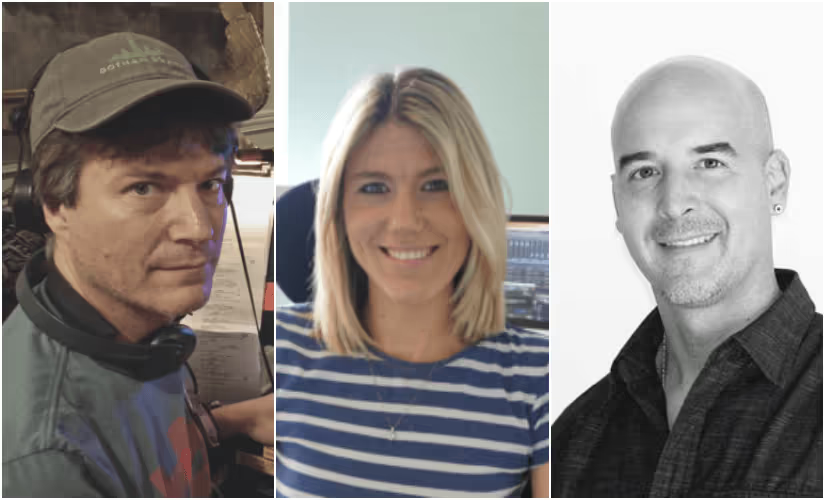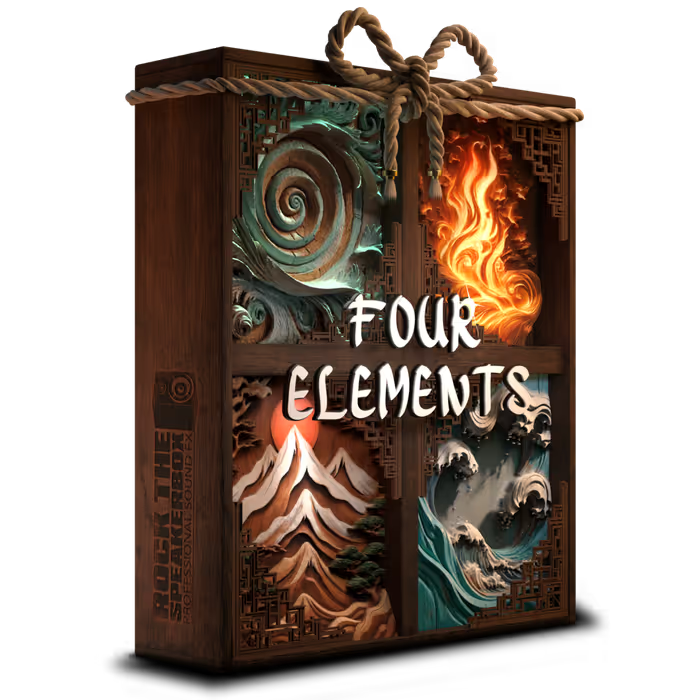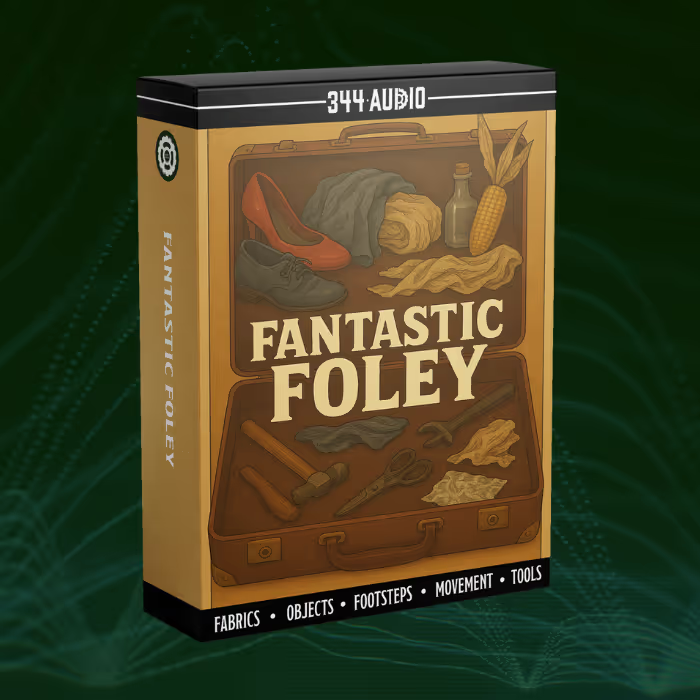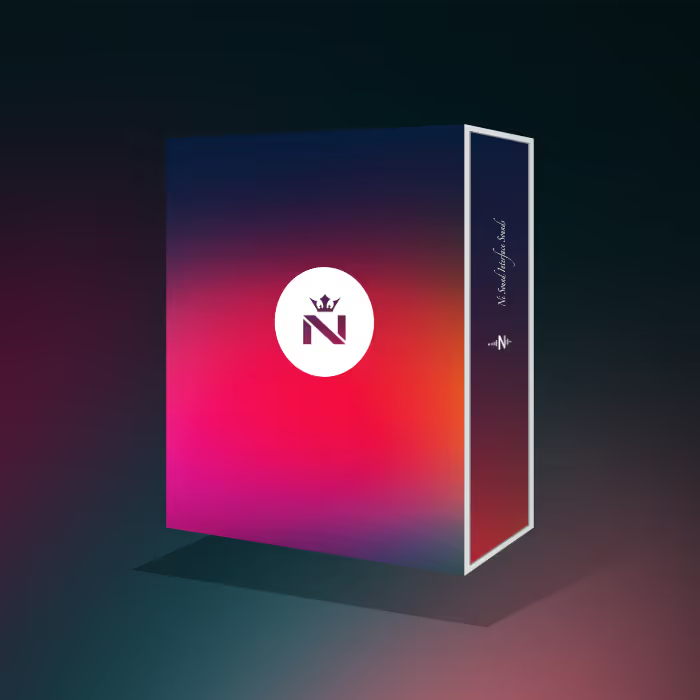In these 3 interviews, you'll hear what it takes to get started and succeed in Sound Editing from Lucy J Mitchell, Production Sound from Irin Strauss, and Sound for Advertising from Chris Pinkston:
• How to succeed in sound design for Film, Documentaries, and Trailers – with Nia Hansen, Peter Albrechtsen, & Karél Psota
• How to succeed in UI/UX Sound Design, ADR Recording, & Audio Programming – with Henry Daw, Emma Butt & Adam Croft
• How to succeed in Theater Sound Design, Podcast Sound Design, and Podcast Production – with Kirsty Gillmore, Jeff Schmidt, and Matthew McLean
• How to succeed in sound design for Games, Animation, and Television – with Anne-Sophie Mongeau, Jeff Shiffman, Kate Finan, & Peter D. Lago
• How to succeed in Audio Branding, Music Editing, and sound for VR – with Steve Keller, Steven Saltzman, Helena McGill & Anna Woźniewicz
• How to succeed in Field Recording, Foley and Teaching Sound – with Thomas Rex Beverly, Ronnie van der Veer, and James David Redding III:
• Explore more than 40 additional resources on how to succeed in sound here
Sound Editing – insights from Lucy J Mitchell:
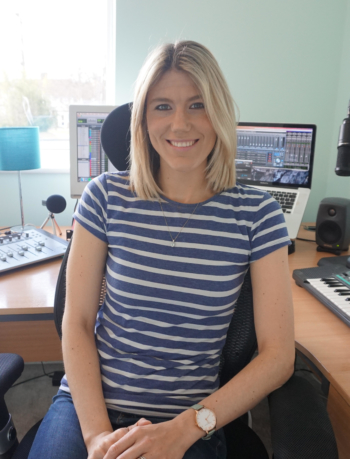 • What working in sound editing entails:
• What working in sound editing entails:As a freelancer, my job is two-fold — the actual sound editing side, and the “running a business as a freelancer” side.
“Sound Editor” is a term that covers a variety of jobs. This can be just dialogue or effects editing, Foley or ADR editing, voiceover recording, or, for factual television, full tracklaying, which is doing everything: music, dialoduge, and effects.
For music, the picture editor will have cut the tracks up, to work with the visuals or to use more interesting parts of the song or whatever. But their edits aren’t always hugely accurate and you need to move stuff around to beat-match and make it all in time!
Trying to explain what dialogue editing entails would take a whole other article, but to summarize, you need to smooth over dialogue cuts made by the editor when mixing takes, or cutting down lines, etc. This is more difficult when using different clips with varying background sounds and noise floors. Your aim is to make the mixer’s life as easy as possible, so chose the best sounding microphones rather than leaving eight of them on the timeline for the mixer to trawl through. Remove clicks, lips smacks, rogue breaths and random noises. If required, perform some noise reduction on especially noisy/buzzy/hummy tracks. (Check with the mixer if they would rather do this themselves or not.)
Your aim is to make the mixer’s life as easy as possible, so chose the best sounding microphones rather than leaving eight of them on the timeline for the mixer to trawl through
Lay these all up in a clear way for the mixer to be able to do their job easily. If different clips need different treatment or EQ, put them on different tracks, and have them on neighboring tracks if possible so the mixer doesn’t need to spend time finding out which fader they need.
Sound effects editing is what it says on the tin. Sometimes it is purely “say what you see” spot effects for things that happen on-screen that need to be heard, like doors opening for example. Atmosphere effects need to be added to act as a bed for everything, like distant traffic, spring birds, country wind, etc. The atmospheres make everything cohesive. Then there are more individual background effects to set the scene. In an office for example, you might add phones, a printer, typing on a computer, outside traffic, etc. Then there are other sounds needed for creative effect, like whooshes, low bass hits, etc., the sorts of sounds you’d hear in a cinema trailer.
• What it takes in terms of skills and gear:
Gear-wise, you need a DAW you are familiar with (or feel is important to learn). Whether that be Avid Pro Tools, Logic, Adobe Audition, or whatever your preference, you will need to purchase some sort of software. Then all you really need is a computer that meets the software’s minimum tech spec requirements and either headphones or speakers.
Skills-wise, you need to know how to use the software, and have a good ear. And as a freelancer, you need to be good at dealing with clients as you are essentially running a business and have to do everything yourself. Organization is also key.
• How to learn it:
There are lots of college and university courses these days that are very good, and also specific to audio, not just “media studies.” However, this is not essential. I didn’t have any relevant training before my first job as a runner. I studied classical music and musicology at university. If you can’t do a tech degree, don’t be worried about the competition. I was the only one of my peers who did not have one and I seem to have done alright!
There are lots of college and university courses these days that are very good, and also specific to audio, not just “media studies.” However, this is not essential
There are lots of books you can read — Dialogue Editing for Motion Pictures by John Purcell is great. There are online tutorials for pretty much anything on YouTube.
But I would say even if you have the degree, read the books, and watch the videos, there is nothing better than watching someone actually do the job in the real world — whether that be work experience, an internship, or making tea at a company and watching someone on your lunch break. You could know Pro Tools inside out but not know how to lay up a dialogue session for a mixer. I am a huge advocate for this type of learning.
• How to find work:
Freelance work is hard to find. People don’t usually advertise a freelance opening. If you want a full time job, there seem to be lots of Game Audio opportunities all the time. But for film and television, even for large post houses, I don’t think I’ve ever seen a job posting for a sound editor. Only runners. I hate the phrase “it’s not what you know, it’s who you know.” You, of course, need to be good at your job. However, there is a lot to say in this industry for networking and getting yourself out there. In this line of work, bookings will come through recommendations, or having met you and remembering you.
In this line of work, bookings will come through recommendations, or having met you and remembering you
I personally would not recommend starting out as a freelancer as you will be competing against a lot of experienced editors with long IMDb listings. I have a solid and varied CV and still am not the go-to person for lots of dramas and films like I’d like to be. My CV has got me meetings with people. Meeting them is what makes them remember me.
• Essential advice for working and making it in sound editing:
I would recommend starting as a runner or assistant (or editor if you’re lucky) in-house somewhere to build up your professional CV and learn as much as you can from both your superiors and peers. The experience you gain in work ethic and team working is also invaluable. Then make the leap to freelancing a few years down the line if that is your desire. That will put you in a much better position to do so. I don’t have a showreel, and don’t know many people at my level who do.
Always be willing to learn. This is an ever changing industry with technology and also people’s wants and needs, and you need to stay on top of that.
Be persistent. People in our industry tend to genuinely be passionate about what they do, so prove that you are too. People like enthusiasm. If someone doesn’t reply to your email, chase them! Sometimes people just forget to reply!
• Further reading and resources:
I already mentioned the book on dialogue editing. I read Audio Post Production for Television and Film by Hilary Wyatt and Tim Amyes, and Pro Tools 101 from the Cengage Learning course when I first started out and found them very useful, as someone who had zero audio knowledge!
Nowadays, I tend to read a lot of audio blogs. If any of you already follow me on Twitter you will know that I share a huge amount of content from various blogs (including this one!) as I sometimes find reading a whole book tough going, and articles are easier to digest for me personally. The ones I like that are more techy and useful for learning about the job are Pro-Tools Expert, Pro Audio Files, Pro Sound Effects, and Mix Online, and of course it’s good to read up on general audio stuff in Resolution Magazine, Sound on Sound, and Audio Media International to name a few! There are so many!
About Lucy J Mitchell:
Named one of Broadcast Magazine’s “Top 30 under 30” in 2013’s Broadcast Hotshots feature, Lucy is a freelance sound editor for TV, film, and computer games, handling all aspects of sound editorial (voiceovers, dialogue, sound effects, ADR and Foley editing). Her credits include EastEnders, Top Gear, David Attenborough’s Rise of the Vertibrates, You, Me & Him, and computer game Guitar Hero Live. She is currently building a fully soundproofed studio in her garden for VO, ADR, and Foley recording and is setting up her new business LJ Studios — a full service audio post facility with eight freelance audio and music specialists on-board.
Website: www.LucyJSound.com
Production Sound – insights from Irin Strauss:
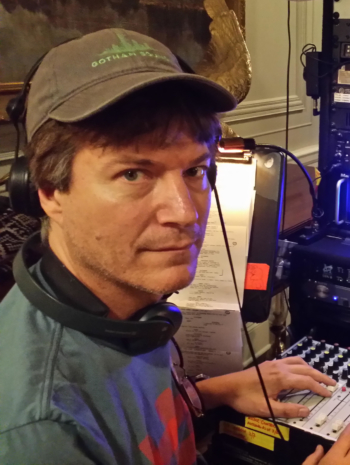 • What working in production sound entails:
• What working in production sound entails:You need a thorough knowledge of the principals and applications of audio recording plus the tools needed to provide exceptional sound quality to production for each job.
• What it takes in terms of skills and gear:
While it is relatively easy to learn the basics of production sound through books and various tutorials you can find online, or even in class, the best way to get a working knowledge is experience and that means working on film and video projects. Also, being a good listener, being able to discern what is good clean sound and knowing the limitations in each location what can be achieved.
People skills are also a plus. “It takes a village” is a good catch phrase to make a project come together. Even with sound, you may need to call on different departments to aid you in achieving your goal and knowing the proper channels to go through (etiquette) to do so.
As you progress in your profession in production sound you may need to buy equipment pending on the role you take in the department. A sound mixer will need a good recorder, a variety of microphones, boom poles, monitoring devices, possibly a sound cart, and a wireless system. The boom operator may want to buy their own pole, a set of headphones, a box to put their boom pole in on-set, and basic utility tools to make quick fixes if they should arrive. The sound utility will want to carry a pouch with wireless accessories, spare batteries, scissors, tape, and maybe headphones as well though the mixer should have enough to go around.
• How to learn it:
There are several approaches to learning the job like those mentioned above. In my opinion, finding a mentor to help you along is the ideal way to segue into the field. If you want to be a sound mixer, my advice is to learn the basics of boom operating. The boom operator may get into certain situations on-set that may require the expertise of someone who’s been in similar positions. The knowledge is invaluable and will facilitate a smooth workflow, solving problems as they arise.
In my opinion, finding a mentor to help you along is the ideal way to segue into the field
To be a good boom operator takes on-set experience and lots of it. It takes time, patience, and a lot of ego shredding.
Shadowing a sound mixer as they work is a great way to learn mixing. Ask a lot of questions, and learn why certain mics are used in different situations, or when to mix boom, wires, or both, and how to plant microphones, and so on.
There are also film schools that offer courses in production sound and theory. It is a good way to establish a foothold by working on student projects which is one way of getting off to a good start.
• How to find work:
Once you’ve become an established boom operator or sound mixer it becomes easier, not to say that it is easy at all to land a long-term job. The best way to do that is to start off doing short term jobs until a long-term job offer comes along. Some people prefer one over the other. But most of the time it’s through references from your contacts.
Also, you can seek them out by researching what’s out there through your local mayor’s office, or website that lists available jobs, like Staffemeup MediaMatch, or Mandy. Make calls to other sound people and let them know you’re available or if they know of jobs coming up. After awhile you may want to join the union and through them you may be able to find work.
• Essential advice for working and making it in production sound:
It’s becoming increasingly difficult to find work since the market is getting saturated with sound mixers and there are a limited amount of jobs. So my advice to anyone getting into the field is to expect a few lean years starting out and don’t give up. Your passion for your profession and positivity will be your selling point as like-minded people will want to work with you. Love what you do. Keep learning as much as you can about your craft.
Expect a few lean years starting out and don’t give up. Your passion for your profession and positivity will be your selling point as like-minded people will want to work with you
Get in touch with working professionals and colleagues and ask for their advice. I’m sure they would be happy to talk to you. Keep learning and work hard and soon you will be an asset to any sound crew. I guarantee you will be sought after and before you know it able to pick and choose your jobs.
• Further reading and resources:
I’ve written a few articles that get into more of the specifics of production sound mixing and the role played on-set along with the relationship formed with producers and directors on some links in my website www.soundmindpictures.com
I can also recommend some books to read like Jay Rose’s “Producing Great Sound for Film and Video.” And Ric Viers’s The Location Sound Bible.
About Irin Strauss:
Irin Strauss is a veteran freelance production sound mixer with 28 years experience. He has worked on both coasts but primarily resides in New York. Projects include, Welcome to the Dollhouse, Manny and Lo, Blues Clues, Sesame Street, Tangerine and Madam Secretary. He currently lives in Westchester, New York.
Website: www.soundmindpictures.com
 These interviews are also available in the massively-popular - and entirely free - Sound Success Guide, a 60+ page guide featuring insights from 20 industry experts on how to get started and succeed in 18 different types of audio jobs:
These interviews are also available in the massively-popular - and entirely free - Sound Success Guide, a 60+ page guide featuring insights from 20 industry experts on how to get started and succeed in 18 different types of audio jobs: Sound Design: Advertising
– insights from Chris Pinkston:
 • What working in sound design for advertising entails:
• What working in sound design for advertising entails:Being a sound designer/mixer in the ad business is very similar these days to longer-form industries. In fact, more often than not, we’re doing long-form projects, augmented reality, video games, and virtual reality projects in addition to documentaries and animated short films/TV shows.
However, the main difference for commercials specifically is there are usually several shorter versions of the same commercial that need to be created. Also, advertising sound post houses are generally not union-based. Projects can last weeks and months or they may last an hour or two. We do mix ads for cinema on occasion, but usually we are mixing in the broadcast or digital spectrum. Like any short-form subject, advertising is often about selling concepts rather than complete story acts. The commercials I work on are usually packed with great talent on the production, editorial and agency side, so usually I’ll get very cinematically-driven projects to design sound for. I’m always fascinated when talking with other filmmakers about how they were able to pull off some of the amazing visual ideas that they do in such little time. I love the advertising world because people are usually friendly and well-versed in the audio language. Clients are usually very excited to be a part of the sound process so that makes it all the more rewarding.
• What it takes in terms of skills and gear:
We expect the same level of skill-set and experience as in any other post production audio business. We all use Pro Tools, but we also use other software to help out with sounds that Pro Tools can’t make.
On the technical side, having a strong knowledge of Pro Tools and basic machine room skills is a must.
We’re often mixing in music from composers, and knowing how to mix that in with dialogue and sound effects is essential
As mixers, about half the time we’ll be recording the actor’s voices in our booth or remotely. We’re often mixing in music from composersm and knowing how to mix that in with dialogue and sound effects is essential.
Having great people skills is also a big plus.
On the creative side, studying how film editorial and story devices work is very important. I’d recommend watching a lot of movies/TV shows/commercials and reading about how the sound/picture editors created those sounds. There are many devices that are commonly used today (ie, French New Wave) that weren’t being used 20 years ago. With that in mind, it’s also good to study film history and see how those concepts worked.
Creating sound for advertising can be either entry-level or an advanced career. I and many of my colleagues have worked in a variety of avenues in the audio business and most mixers have many years of experience. When I started in the business in the late 1990s, it was important to know about timecode, video machines frame rates, laybacks and the recording process. Those skills still apply today, regardless of technology changes.
• How to learn it:
There are many avenues in learning the job. I started in film school, which I highly recommend. In film school, you get to be a part of every side of the project, so you can understand what those skills are when becoming a sound editor. I think learning how films are edited and created are essential for a career in audio.
I think learning how films are edited and created are essential for a career in audio
We also get interns that are still in college and wanting to explore the audio business as a career. On the mixing side, some are lucky enough to start as mix assistants and on the editing side, many start as Foley editors, dialogue editors, radio technicians, sound librarians, music studio assistants, projectionists, radio engineers, or editorial assistants and work their way to becoming sound effects editors or mixers.
• How to find work:
There are a variety of post production houses in Los Angeles/NYC as well as in some other US cities.
• Essential advice for working and making it in audio for advertising:
I’d recommend anyone wanting to succeed in audio for advertising to have some projects under their belt. Films, TV episodic/reality and animation skills all apply. Try to find a post production house that you like and try to find a way to go to work for them :)
• Further reading and resources:
I’d say all of the articles on this website would be a great resource for the aspiring audio editor/mixer. There are a number of sound design books that are great supplements to going to film school.
About Chris Pinkston:
Chris is an award-winning mixer/ lead sound designer at 740 Sound in Los Angeles, CA. He’s earned Telly, Aegis and Silver Microphone awards for his sound work on commercials for top brands such as Levis, Hewlett Packard, America West Airlines, and the Oakland Raiders.
Website: www.740sound.com/staff/2017/5/25/chris-pinkston
LinkedIn: www.linkedin.com/in/chris-pinkston-30b8ba6/
A big thanks to Chris Pinkston, Lucy J Mitchell, and Irin Strauss for sharing their valuable insights with us!
Power Lists - essential audio resources and insights:
• The Sound Design Power List
• The Game Audio Power List
• The Film Sound Power List
Succeed in sound:
• How to Set (and Get) the Right Price for Your Audio Work
• 10 Essential Tips for Game Audio Freelancers
• How to be a successful sound designer – with Scott Gershin
• How To Actually Live as an Audio Freelancer – by Melissa Pons
• How to set your sonic creativity free & overcome creative inhibitions – by Mark Kilborn
• 5 Useful Tips for Upcoming Sound Designers and Sound Editors
• Sound Opinions: How to get game audio pricing right
• Building a successful audio post studio – with Kate Finan and Jeff Shiffman
• Rebuilding your studio: Goals, tips and lessons learned
• Creating audio for games – with Martin Stig Andersen
• A life in sound: How to foster creativity and protect yourself from burning out – with Chance Thomas
• Better audio work habits: How a Wacom Tablet can help reduce the risk of Repetitive Strain Injury (RSI)
• Better audio work habits: How a sit & standing desk can reduce your sedentary studio life
• Tips and thoughts on running your own audio post production house – with William McGuigan
• 30+ year audio veteran Andy Greenberg, on building client relationships in the advertising industry
• 7 Sound Alternatives to Working For Free
• Audio Outsourcing Success: Essential Tips, Thoughts and Working Practices from Adele Cutting
• How to succeed in UI/UX Sound Design, ADR Recording, & Audio Programming
• How to succeed in sound design for Film, Documentaries, and Trailers
• How to succeed in sound design for Games, Animation, and Television
• How to succeed in Field Recording, Foley, and Teaching Sound
• How to succeed in Audio Branding, Music Editing, and sound for VR
• How to succeed in Theater Sound Design, Podcast Sound Design, and Podcast Production
• How to succeed in Sound Editing, Sound for Advertising, and Production Sound
• How to succeed in Sound Editing, Sound for Advertising, and Production Sound
• The Composer Success Series: Composing for Film – ft. Pinar Toprak, Nainita Desai, & Jonathan Snipes
• The Composer Success Series: Composing for TV – ft. Charlie Clouser, Sherri Chung, & Cindy O’Connor
• The Composer Success Series: Composing for Theatre – ft. Elyssa Samsel, Kate Anderson, and Daniel Kluger
• The Composer Success Series: Composing for Games – ft. Inon Zur
• The ‘Quit Aspiring’ book – by Adam Croft
• How to get hired in game audio – thoughts and insights from your potential employer’s perspective
• Why gear is not the ticket to entry in the game audio community
• 4 Effective Ways to Break into Game Audio
• Tips for Creating a Perfect Resume for Audio Industry Jobs
• Yet Another Game Audio Hiring Article – by Ariel Gross
• 5 Tips for Getting a Job in the Audio Industry
• Applying for a job in game audio – by Matthew Florianz
• Freelance Game Audio: Getting Started and finding work – by Ashton Morris
• How to get started (and make it) in game audio – 10+ fundamental questions answered by Akash Thakkar
• Courses: How to network and get paid for your work in the game industry – by Akash Thakkar
• How to Craft a Perfect Cover Letter for Audio Industry Jobs
• Get the weekly Audio Jobs newsletter
• Join the Audio Jobs Facebook group
• Upload your demos to Soundcloud
• Upload your demos to ReelCrafter
• Find interesting audio events around the world
• Find other audio pros around the world
• How to prepare for – and power through – a layoff in the game audio industry, with Brian Schmidt:
• How to Survive a Game Audio Layoff – insights from Damian Kastbauer
• What it’s like to be laid off from your video game studio
• What To Do Before and After Being Laid Off
• Facebook Group: Survival Skills for Creatives
• How To Learn Game Audio Online – A talk with Game Audio Educator Leonard Paul
• Hear the very best podcasts about sound
• Read the 100s of sound stories and guides on the A Sound Effect blog (search for stories here)
• Browse Industry Data: Game Music and Sound Design Salary Survey Results
• Browse 100+ Sound Design Guides
• Find essential books about sound – for film, games and audio post production
• Get tips and ideas for making your own sound effects
• Use the Audio Events Calendar to find audio-related events around the globe
• Get a steady stream of great sound stories from the community
• Discover 1000s of sound libraries from the independent sound community
• Take online courses in Wwise, FMOD Studio, Unity, Pure Data & Unreal at the School of Video Game Audio
• Sound effects survey results: Here are 90+ ideas for new SFX libraries
• How to create an indie sound bundle
• The quick-start guide to adding sound FX library metadata
↑ Back to top

